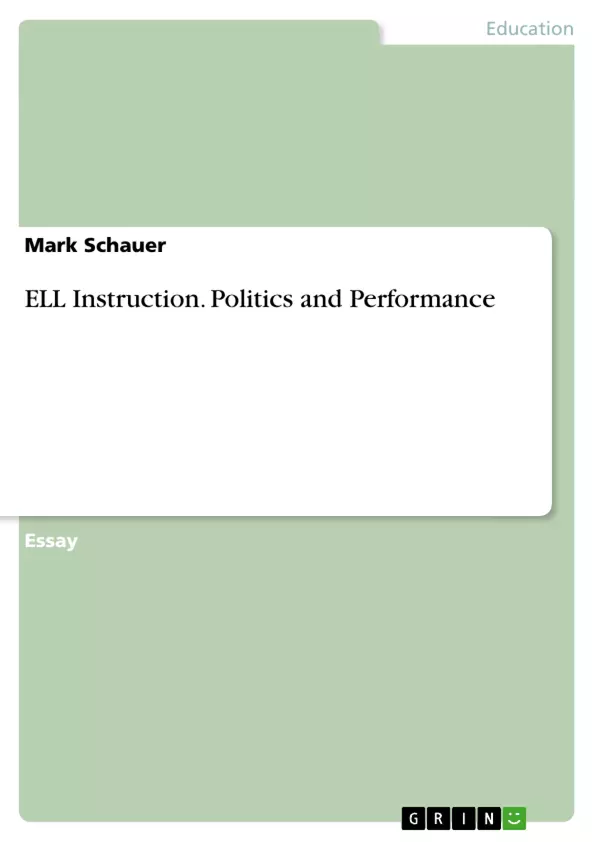There is intense political polarization over immigration in border states like Arizona and California, and public schools are a major battleground in the cultural war. Most elected officials and the pressure groups that court them piously claim that their particular agenda has no motive beyond doing what is best for the children, and likewise share the goal of teaching English to students who have little or no faculty with it. There has been a plethora of academic studies about the relative merits of both bilingual and immersion strategies, though like the political debate that inspires them they tend to generate more heat than light. Beyond the heated rhetoric and nativist passion, it seems that both styles of language instruction can be successful if they are girded by the things all students need: quality instruction and learning materials, patience, and individual attention.
Inhaltsverzeichnis (Table of Contents)
- ELL Instruction: Politics and Performance
- The Argument
- The Current State of Affairs in Arizona and California
- The Problem of Language Acquisition
- The Role of Assessment in ELL Instruction
- Bilingual Versus Immersion: The Debate Continues
- The Future of ELL Instruction
Zielsetzung und Themenschwerpunkte (Objectives and Key Themes)
This work examines the challenges and complexities of providing effective English Language Learner (ELL) instruction in the United States, with a particular focus on the states of Arizona and California. It explores the political climate surrounding immigration, the different pedagogical approaches to ELL instruction, and the effectiveness of current programs. The text also delves into the role of assessment in ELL education and the debate surrounding bilingual and immersion strategies.
- The political landscape of immigration and its impact on ELL education
- The effectiveness of bilingual and immersion programs in promoting language acquisition
- The role of assessment in ELL instruction and the limitations of standardized testing
- The need for a more comprehensive approach to ELL instruction that addresses the individual needs of learners
- The challenges of securing adequate funding and resources for ELL programs
Zusammenfassung der Kapitel (Chapter Summaries)
The first chapter provides an overview of the political and social context surrounding ELL instruction in the United States, highlighting the ongoing debate between bilingual and immersion approaches. It also discusses the historical development of ELL programs and the challenges faced by educators in meeting the needs of diverse learners. The second chapter delves deeper into the complexities of language acquisition, examining the research on how students acquire a second language and the factors that influence their success. The third chapter explores the role of assessment in ELL education, examining the limitations of traditional standardized tests and the need for more authentic forms of assessment. The fourth chapter focuses on the ongoing debate surrounding bilingual and immersion programs, analyzing the research evidence and the arguments presented by proponents of each approach. The fifth chapter concludes with a discussion of the future of ELL instruction, highlighting the need for ongoing research, innovative pedagogical approaches, and adequate funding to ensure that all students have access to high-quality education.
Schlüsselwörter (Keywords)
This work focuses on key concepts such as English Language Learners (ELL), bilingual education, immersion programs, language acquisition, assessment, standardized testing, and the political and social context surrounding immigration and education.
- Arbeit zitieren
- Mark Schauer (Autor:in), 2011, ELL Instruction. Politics and Performance, München, GRIN Verlag, https://www.grin.com/document/230262



